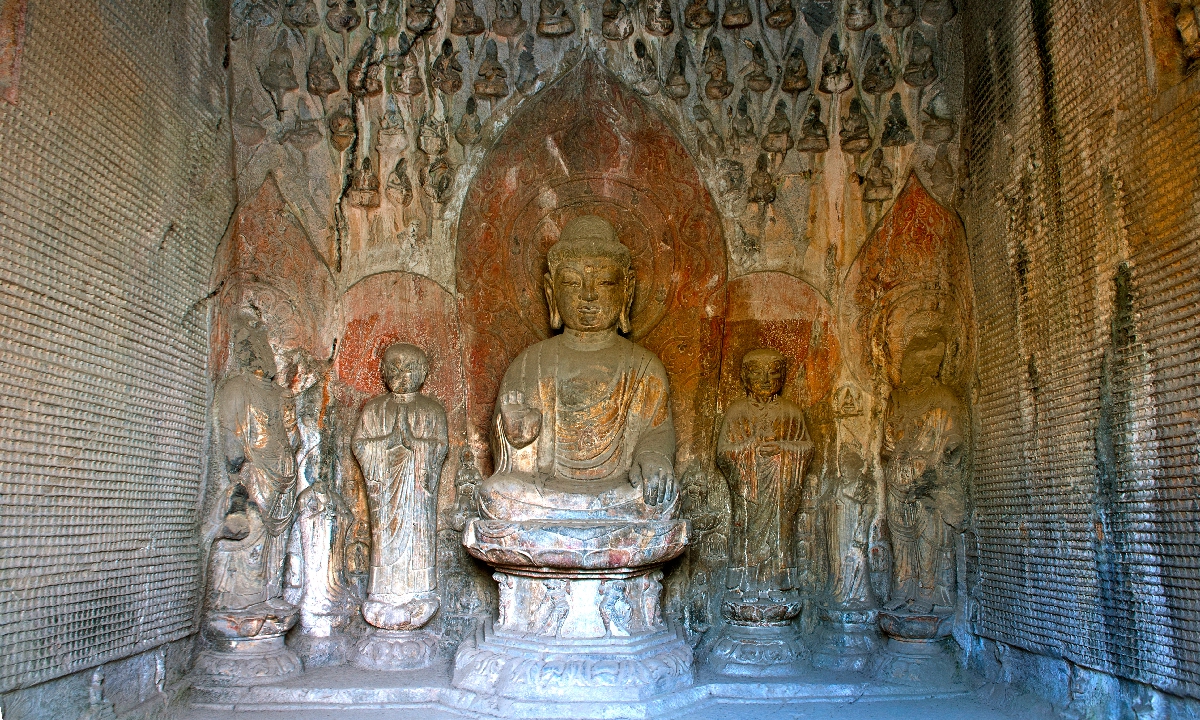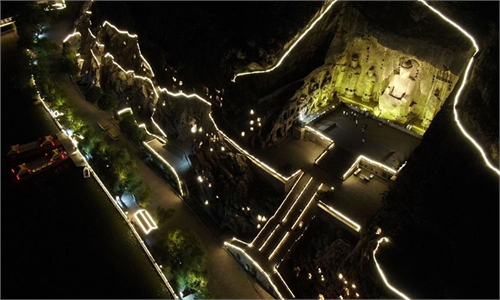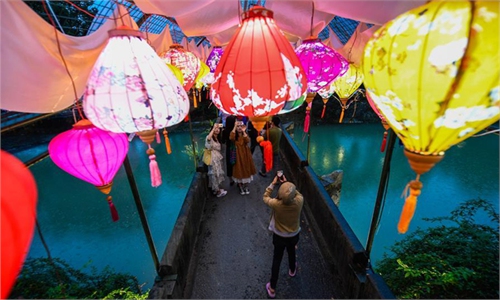Chinese researchers work to digitally recreate ancient Longmen Grottoes relief lost overseas

Longmen Grottoes Photo: VCG
A project to digitally reconstruct a more than 1,400-year-old relief that once stood in the Longmen Grottoes in Central China’s Henan Province is underway, with members of the project heading to the other side of the globe to scan the pieces that have been lost overseas.The 2-meter-tall relief portrays a grand scene of an emperor and empress of the Northern Wei Dynasty (386-534) leading dozens of officials to worship the Buddha. The emperor stands on the left and is followed by dozens of officials, while the empress stands on the right, leading ladies and maids, according to a report from the Shanghai-based media outlet The Paper.
More than 40 figures were carved in the relief, each one sporting unique expressions and poses. The artwork vividly depicts the solemness of the ceremony and the grandeur of the royal family and aristocrats that lived during the dynasty. The relief is considered to be one of the best examples of sculpture art from the period.
The report said that the clothing and rituals depicted in the relief reflect the reforms implemented by the emperor and the cultural fusion that was taking place in China at the time and therefore is considered to possess significant historical value.
“Among the tangible cultural heritages of ancient China, this relief carving, with its thematic scene composition, is a national treasure when it comes to the history of Chinese art and sculpture,” Shi Jiazhen, head of the Research Institute of Longmen Grottoes, told media.
However, parts of the relief were cut off and removed from the grottoes in 1930s by Chinese masons hired by a US merchant, with some of the pieces making their way to the US. Two larger sections are currently on display in two museums in the US: the Metropolitan Museum of Art in New York and The Nelson-Atkins Museum of Art in Kansas City, Missouri.
Other pieces were discovered in a custom warehouse in Qingdao, East China’s Shandong Province in 1953. These pieces were later relocated to a warehouse belonging to the Research Institute of Longmen Grottoes.
In order to restore this scattered national treasure, the institute is working with the Chicago University in the US and Xi’an Jiaotong University in China to scan the sections in the US museums.
The team is using 3D digital technology to restore the relief that was stolen and sold nearly a century ago and to place it back in a virtual reality recreation of the grottoes.
The full relief is set to be presented to the public at the end of 2021.
The Longmen Grottoes boast some of the finest examples of Chinese Buddhist art. There are as many as 100,000 statues within the site’s 2,345 caves. The nearby region also has nearly 2,500 steles and inscriptions, hence its nickname “Forest of Ancient Steles."
In 2000 the site was added to the UNESCO World Heritage List as “an outstanding manifestation of human artistic creativity,” for its perfection of an art form.


